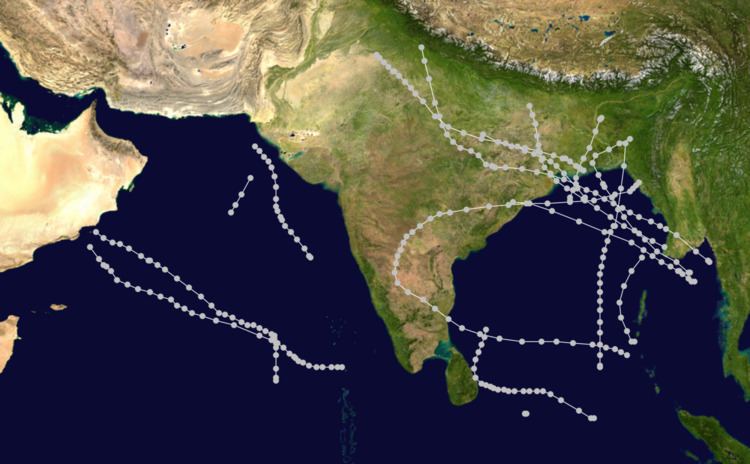First system formed January 3, 1963 Name Three Deep depressions 11 | Last system dissipated December 7, 1963 Depressions 17 Cyclonic storms 6 | |
 | ||
The 1963 North Indian Ocean cyclone season had no bounds, but cyclones tend to form between April and December, with peaks in May and November. The season has no official bounds but cyclones tend to form between April and December. These dates conventionally delimit the period of each year when most tropical cyclones form in the northern Indian Ocean. There are two main seas in the North Indian Ocean—the Bay of Bengal to the east of the Indian subcontinent and the Arabian Sea to the west of India. The official Regional Specialized Meteorological Centre in this basin is the India Meteorological Department (IMD), while the Joint Typhoon Warning Center releases unofficial advisories. An average of four to six storms form in the North Indian Ocean every season with peaks in May and November. Cyclones occurring between the meridans 45°E and 100°E are included in the season by the IMD.
Contents
Severe Cyclonic Storm Two
On May 24, a reconnaissance aircraft flew into the 19 km (12 mi) eye of the storm, encountering winds of 193 km/h (120 mph).
Severe Cyclonic Storm Three
One of the strongest cyclones ever recorded in the Northern Indian Ocean. Had the lowest known pressure in the basin until 1977. Killed 11,520 people in East Pakistan.
Deep Depression Four
Produced torrential rains over parts of eastern India, peaking at 910 mm (36 in) in Cherrapunji.
Deep Depression Eight
Heavy rains from the storm triggered severe flooding that killed at least 200 people.
Deep Depression Nine
At least 15 people were killed by flooding triggered by the depression in Orissa.
Depression Ten
Some loss of life was reported in East Pakistan.
Severe Cyclonic Storm Twelve
Significant damage and flooding took place in India, with some loss of life reported.
